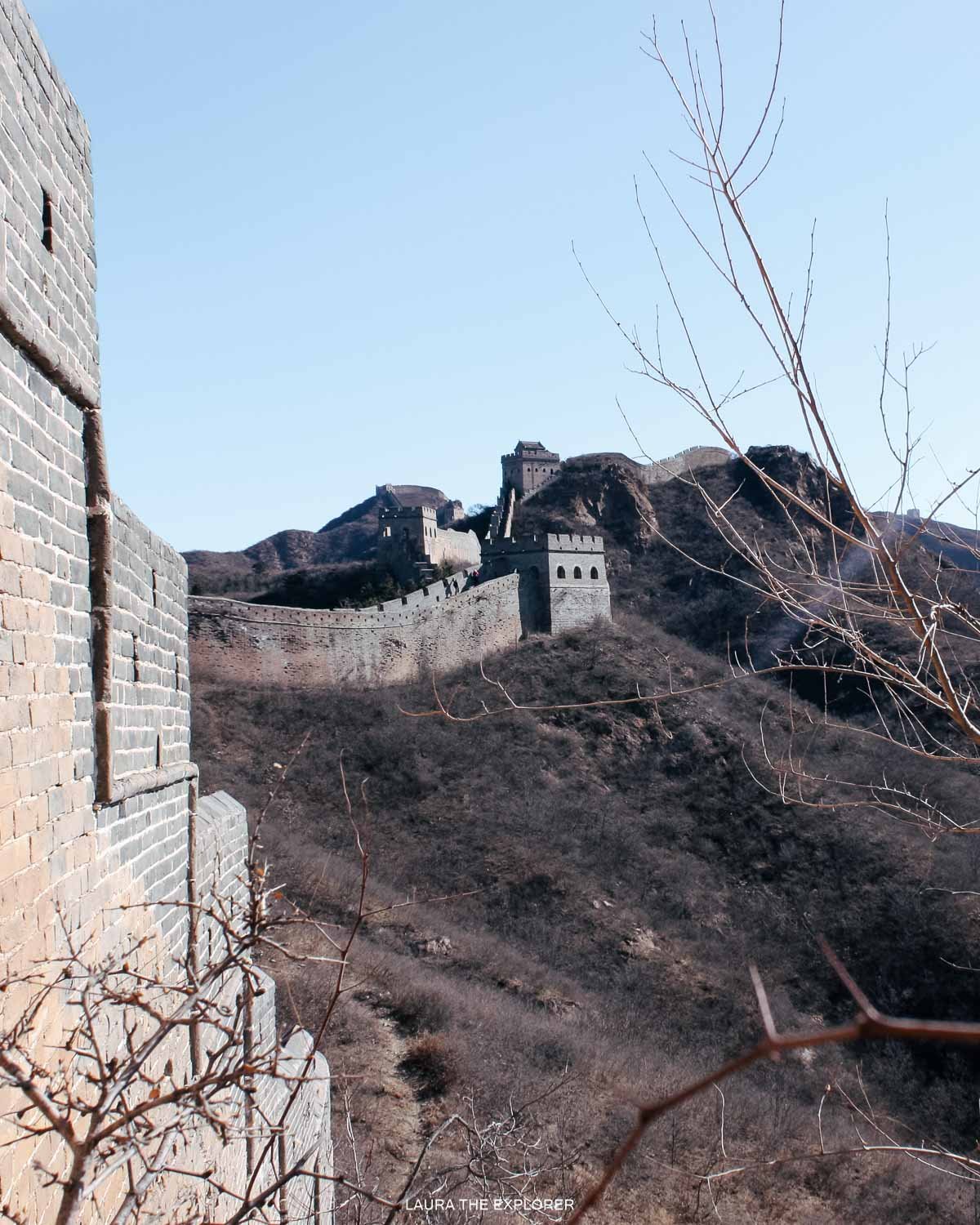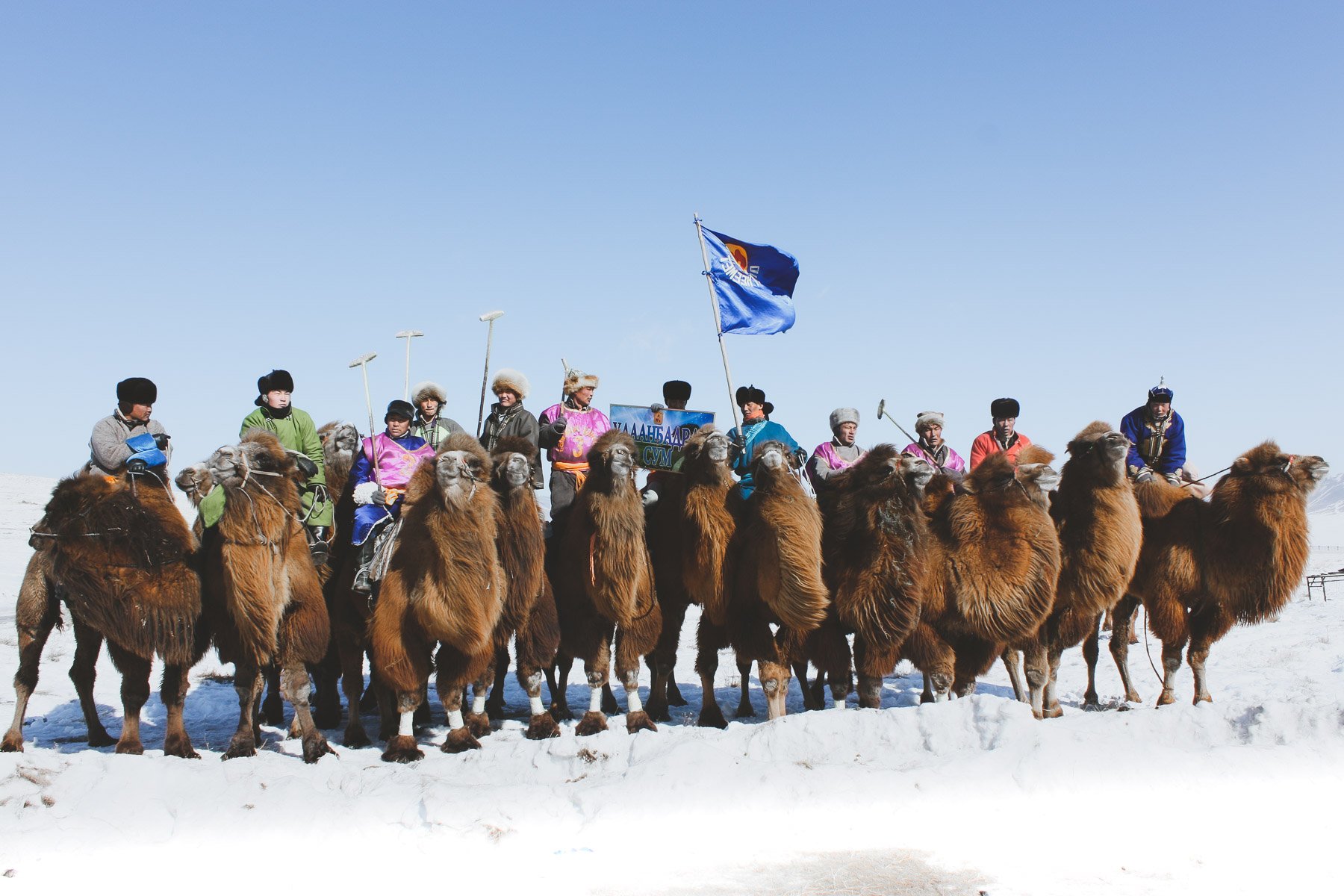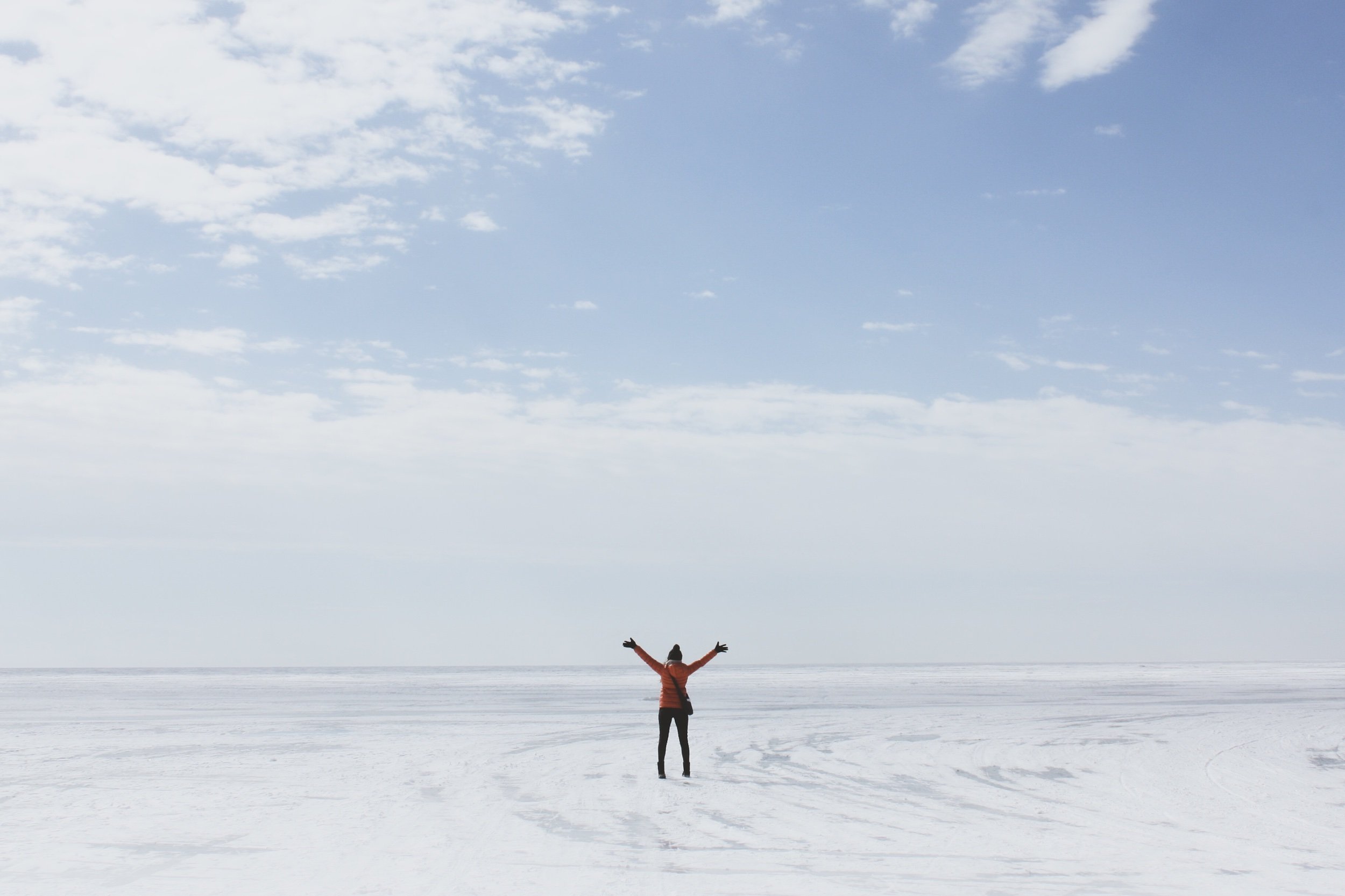Badaling, Mutianyu or Jinshanling? Why You Should Visit the Jinshanling Great Wall of China
One of the Seven Modern Wonders of the World, there’s just no way to visit Beijing without making a trip out to the Great Wall of China.
It’s one of the most popular attractions in the world with over 10 million visitors per year, so finding the right section to visit is the key to enjoying this incredible feat of construction. With many options such as Badaling, Mutianyu or Jinshanling, it’s hard to know where to go.
With little to no crowds, sympathetic reconstruction, options for hiking and accessibility on public transport, here’s all the details on why you should visit the Jinshanling Great Wall of China and how to get there.
The wall itself was originally a series of fortifications to protect against invasion from nomads across the Eurasian Steppe, built in various stages from early 7th century BC through to the 1600’s with some of the most famous and most well maintained sections constructed by the Ming Dynasty from 1368-1644 BC.
The wall is not one continuous wall - various Chinese dynasties constructed different sections to suit their own needs, particularly for the Early Walls where rival states were looking to protect their own borders. The wall is also made up of different features - ramparts, trenches, ditches and watchtowers all combine to form this architectural marvel.
The Ming Great Wall is the most recently constructed and most accessible part of the Great Wall system. It runs from Jiayu Pass in the Gansu Province on the edge of the Gobi Desert, crossing 8,850km to Manchuria and the Hushan Great Wall in the East.
The sections of the Ming Great Wall closest to Beijing are by far the most popular to visit, thanks in large part to them being frequently renovated and promoted as a key attraction for visitors to China.
So how do you decide which section to visit when planning a trip to the Great Wall of China from Beijing? Here’s all the details on what sections are within easy reach from Beijing, and which section you should visit (hint: if the title of the post didn’t give it away, it’s Jinshanling!).
Jinshanling, looking east to the Simatai section.
Beijing Sections of the Great Wall of China
Badaling Great Wall
The Badaling Great Wall section is by far the most famous and most popular section of the Great Wall to visit. It has been extremely well restored and is the main destination for local Chinese tourists and organised tours. 2-3 hour long tours are widely available and it’s also possible to visit independently via high speed train.
A trip to Badaling is often combined with a stop at the Junyongguan Great Wall section. The closest section of the wall to Beijing, it features a huge castle-like fortress which is unique to this section.
Unless you’re stuck on a pre-arranged tour to this section or are looking for the easiest option, I’d highly recommend choosing an alternative section to visit as this section gets extremely crowded. In fact, a limit was introduced recently and visitors to this section are now capped at 65,000 people per day - that’s still a whopping great number of people to share the 7m wide wall with!
Summary: Crowded, easily accessible by public transport, fully restored.
Mutianyu Section
Considered one of the best examples of the Ming Dynasty wall, the Mutianyu Great Wall section is a popular option with foreign visitors looking to escape the intense crowds at Badaling. It’s well connected via public transport (via bus then taxi) from Beijing, so it’s a popular choice for independent visitors (allow up to a half day) and organised tours are available.
The Mutianyu section is well known for being surrounded by beautiful vegetation and featuring a watchtower every 100m or so. The most impressive features of this section are the Mutianyu Gate (Zhengguan Tai) and the Great Watchtower, and it also has an added attraction of a fun toboggan for a quick trip back down the mountain. This section can still get busy over summer, and whilst less busy than Badaling, there are less busy options.
This is actually the section of wall we set out with the intention of visiting, however a persuasive taxi driver convinced us that the Jinshanling section was better, so we opted to follow his advice.
Summary: Less busy, easily accessible by public transport, fully restored.
Winter on the Great Wall of China
Jinshanling Section
The Jinshanling Great Wall is considered one of the most beautiful and photogenic sections of the wall. It features some steep stairs and 67 watchtowers over it’s 11km length and is most popular for hiking and photography thanks to the lack of crowds to deal with. It’s possible to visit this section independently (allow a half day) using public transport, though a couple of transfers are required, and organised tours are available.
This section features some great architectural examples, such as the General Tower, a great example of the military defense system, the Dajinshan and Xiaojinshan Towers with their technical architecture, and a large architectural relief sculpture lcoated at one of the towers.
The Jinshanling section is also popular with hikers as it can be combined with other sections. The main route starts at the Gubeijou Great Wall Section and ends at Jinshanling and takes about 6km / 4hrs. The alternative route starts at Jinshanling and runs to Simatai West, before returning back to Jinshanling, taking 13km/ 6hr return.
The through-route from Simatai to Jinshanling was once a very popular hiking route however it’s no longer possible following the restoration of the Simatai section. Due to deteroriation, the connecting zone between Simatai and Jinshanling has been blocked off.
Jinshanling Great Wall was the section that we visited, and we’ll be ever thankful to the taxi driver who convinced us that this was the best section!
Summary: Far less busy, accessible by public transport, partially restored/partially original.
Chances are you’ll have Jinshanling all to yourself.
Other Sections
Simatai
Next door to Jinshanling and recently restored and reopened, this section is extremely scenic, however, only the eastern portion of the section is open to visit. Located along a steep ridge, the complete hike along the Simatai section takes around 3 hrs (unless using the cable car). The recent restorations have been kept as minimal as possible to retain the authenticity of the original wall.
Summary: Far less busy, accessible by public transport, partially restored/partially original.
Jiankou
Considered the ‘adventurous section’ thanks to it’s unrestored terrain and steep cliff-edges, it’s also one of the most photogenic and can be connected with the Mutianyu section for adventurous hikers. This section of the wall is currently undergoing restoration so it will be interesting to see how busy it gets when China reopens for travellers.
Summary: Far less busy, accessible by public transport (but more complicated), undergoing restoration.
Huanghuacheng
The only section near Beijing that runs through a lake, the Huanghuacheng Great Wall section is a unique section to visit. It’s a popular location for boating and short hiking/walk options. This section is also close by the Ming Tombs if using private transport (bus connections are a little more complicated).
Summary: Less busy, accessible by public transport, mostly restored, best visited in summer.
Sympathetic restoration at Jinshanling
Why You Should Visit the Jinshanling Great Wall Section
So how do you chose which section of the Great Wall of China to visit when in Beijing?
In my opinion, if you’re looking to experience:
Minimal to no crowds.
An authentic section of the wall where restoration has been kept minimal and for structural integrity only, rather than a fully restored section.
Accessible by public transport for an independent visit.
Hiking options to other sections of the great wall.
Then, the Jinshanling Great Wall is the section you should visit!
No Crowds!
Everyone’s seen those photos right? The Great Wall of People, where the wall is so jammed that it looks more like a conveyor belt? That’s not going to happen at Jinshanling.
Though we visited in the off-season (March), we didn’t see a single other tourist in the whole time (two or so hours) we spent at the wall - not one! In fact, the rangers were all just sitting around smoking cigarettes and taking taps and seemed pretty surprised to see us arrive.
At Jinshanling, you can expect to have the wall pretty much to yourself, which is ideal for exploring and photographing this extremely photogenic section.
It’s quiet work for the rangers at Jinshanling
An Authentic Experience
The Jinshanling section of the Great Wall has been partially restored, and is now considered ‘partially wild’.
That means that the structural integrity of the wall has been restored so that the wall is navigable on foot, but it has not been completely restored to make it look brand new. It therefore retains the authenticity of the circa 400 year old wall that it it.
You can expect some of the steps to be damaged or chipped and walls may be incomplete or missing, however it really feels like you are standing on an old wall that has stood the test of time. Basically, it’s the complete opposite of the shocking, and widely criticized, restoration project where the wall was covered in concrete!
Hikes to Other Sections
The Jinshanling Great Wall section is definitely interesting enough for a dedicated visit, but it’s also possible to combine this section with both the Gubeikou and West Simatai sections. We had originally planned to hike through to Simatai, but unfortunately it was closed for restoration at the time.
The most popular hikes are:
Gubeikou to Jinshanling - 6km / 4hrs
Jinshanling - West Simatai - Jinshanling - 13km / 6hrs
Combining sections of the wall is a one of the best benefits to visiting Jinshanling, and experiencing the uniqueness of the different sections makes for some of the most interesting short hikes in the Beijing area.
Looking west to the Gubeikou section beyond.
Accessible For Independent Visits
The Jinshanling Great Wall section is accessible on public transport from Beijing, even during the off-season.
From April to October (peak season), there is a dedicated bus route running to Jinshanling, and in the off-season, it can be reached on public transport using a combination of metro, bus, and a taxi for the final step. Using regular public transport rather than the dedicated tourist bus if also a good option if you want flexibility in your schedule, as the tourist bus only runs once per day.
Jinshanling is a little further to reach than Mutianyu and Badaling, but the benefits of Jinshanling make the extra travel totally worth it.
Once you’re at the wall, it’s easy to find your way around, with even some signage in English to help guide your way. From the entry pavilion, the wall can be reached either by cable car or a short walk.
For our visit in March, the cable car wasn’t running, probably due to the lack of demand, seeing as we were the only ones there!
We were advised the walk up to the wall would take over half an hour, but in reality, our group with regular fitness levels at a rather relaxed pace reached the wall in about 15 minutes. So unless you have mobility issues, taking the short walk up through the trees is a really easy option.
The added benefit of using public transport is you can spend as long as you like at the wall, ideal for some of the hiking options!
The Jinshanling Great Wall
Part of the structural Jinshanling reconstruction.
Looking for other places to stop on the Trans-Mongolian Railway? Check out Terelj National Park near Ulaanbaatar, Mongolia:
Ger Camps & Camel Festivals: What to Expect on Tour of Terelj National Park
How to Get to Jinshanling
Getting to Jinshanling Great Wall via Public Transport During Peak Season
From central Beijing, take the metro Line 2 to Dongzhimen Station.
Walk from the metro station to Dongzhimen Wai Bus Station, located at 45 Dongzhimenwaixie St, Dongcheng, Beijing. It’s about a 5-10 min walk from the metro station.
Take the dedicated tourist bus direct to Jinshanling. The bus departs once per day at 07:40am and costs 120RMB (NZ$27 / US$18) - this includes the Jinshanling Wall entry cost, cable car and return trip.
Return from Jinshanling direct to Beijing at 16:00pm.
Getting to Jinshanling Great Wall via Public Transport During Off-Season
From Central Beijing, take the metro Line 2 to Dongzhimen Station, then transfer to Line 13 to Wangjingxi (Wangjing West) Station.
Head out Exit B to the Wangjing West Bus Station, about a 100m walk.
Catch the coach bus heading to Luanping, which runs every hour from 7am and costs 32RMB (bring cash). After approximately 2 and a half hours, alight at the Jinshanling Highway Service Centre.
At the Jinshanling Highway Service Centre, take the dedicated shuttle bus to the East Gate or the Main Gate, which are timed to meet the first couple of coach buses from Beijing and cost 10RMB each way. If there is no shuttle, a taxi will cost no more than 20RMB.
Return from either the East or West Gate via the shuttle bus at 3pm (timed to suit the last coach bus departure). The coach bus from Jinshanling Highway Service Centre departs hourly, with the last of the day leaving at 4pm and arriving back at Wangjing Station about 6:30pm.
The total costs for this option is 149RMB (NZ$33 / US$23) peak-season or 139RMB (NZ$31 / US$21) off-season (2x 32RMB coach bus, 2x 10RMB shuttle, entry fee of 65RMB or 55RMB off-season). The cable car, if used, is 40RMB one way, or 60RMB return, however is most likely not necessary for most people visiting Jinshanling.
In my opinion, getting the Great Wall of China to yourself for around NZ$30 / US$20 is an incredibly good deal!
Map of the Jinshanling Great Wall of China.
Getting to Gubeikou Great Wall via Public Transport During Off-Season
If you’re looking to hike from the Gubeikou Great Wall section to the Jinshanling section:
From central Beijing, take the metro Line 2 to Dongzhimen Station.
Walk from the metro station to Dongzhimen Wai Bus Station, located at 45 Dongzhimenwaixie St, Dongcheng, Beijing. It’s about a 5-10 min walk from the metro station.
Take bus 980 to Miyun Shaonian Gong Station. The bus leaves every 15 minutes from 6am, takes about 1 and a half hours and costs 15RMB.
Walk to the China Mobile Building, approximately 200m away where a roadside bus stop is located.
Take bus 25 to Gubeikou Station.
Walk or take a taxi to the Gubeikou Great Wall section which is about 4km from the bus stop. The section of the wall is also known as Panlongshan, so look for signage for this name once in Gubeikou town.
Once you’ve hiked through to Jinshanling, follow the instructions above for returning from the Jinshanling Great Wall section.
What to take
Here’s what you should pack for a daytrip to one of the ‘wild’ Great Wall sections.
Good Footwear - for hiking over uneven steps and rocks.
Sun Protection - other than the watchtowers, the top of the wall is fully exposed.
Water & Food - there are limited places to buy drinks and food near the wall. Some smaller stalls and shop appear in peak season, but chances are they’ll be closed over winter (they were for us).
Cash (RMB) - the bus tickets and entry to the wall will both require payment in cash (RMB).
Warm Clothing Layers - over winter, it’s brutally cold, but you may want to start peeling the layers as you hike the wall.
Book or Kindle - the bus ride is a couple of hours each way, so a book will help pass the time.
Camera & Tripod - of course! Jinshanling is one of the most photogenic sections of the wall.
Toilet Paper - for the public bathrooms near the wall.
The snow wasn’t melting on this crisp winter’s day
After exploring Beijing, jump on the Trans-Mongolian Railway across Mongolia and Russia:
The Trans-Mongolian Railway: From Beijing to Ulaanbaatar by Train
Want to save this guide for later? Pin it!
This post was about:

















